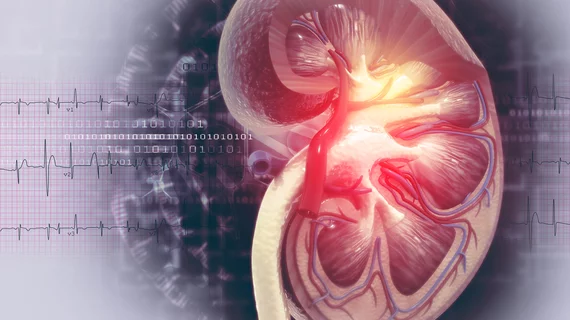‘A game changer’: University piloting handheld imaging device to locate, break up kidney stones
UC San Diego Health is testing the use of a minimally invasive, handheld device that can more easily detect and demolish kidney stones, without the need for x-rays or sedation.
They just enrolled the first patient for the clinical trial, UCSD Health announced Monday, Oct. 14. Providers will soon begin investigating whether the “Break Wave” can effectively splinter stones in a non-surgical environment.
“If this study shows that this technology is both safe and effective in fragmenting kidney stones and does so with little to no anesthesia, it could be a game changer for patients,” Roger Sur, MD, urologist and director of the Comprehensive Kidney Stone Center, said in a statement.
Different from more traditional shock wave technology, this lithotripsy device emits cyclic pulses of ultrasound that fracture deposits at lower pressures. Providers will gently place the Break Wave over the kidney or ureter, pinpoint it with real-time ultrasound, and release a burst of sound to break them up. Sur compared the procedure to an “opera singer hitting the right vocal pitch to produce vibrations that stress and break a wine glass.”
More traditional lithotripsy uses a high-amp shock wave, and typically requires x-ray imaging before the procedure, along with higher pressures and sedation during it. The latter can sometimes lead to complications including urinary tract injury or hematomas.
The device was first invented at the University of Washington and San Mateo, California-based SonoMotion is sponsoring its trial at UCSD Health. Sur and providers at other kidney centers plan to enroll 30 patients in the trial, with stones as large as 20 millimeters in diameter.

